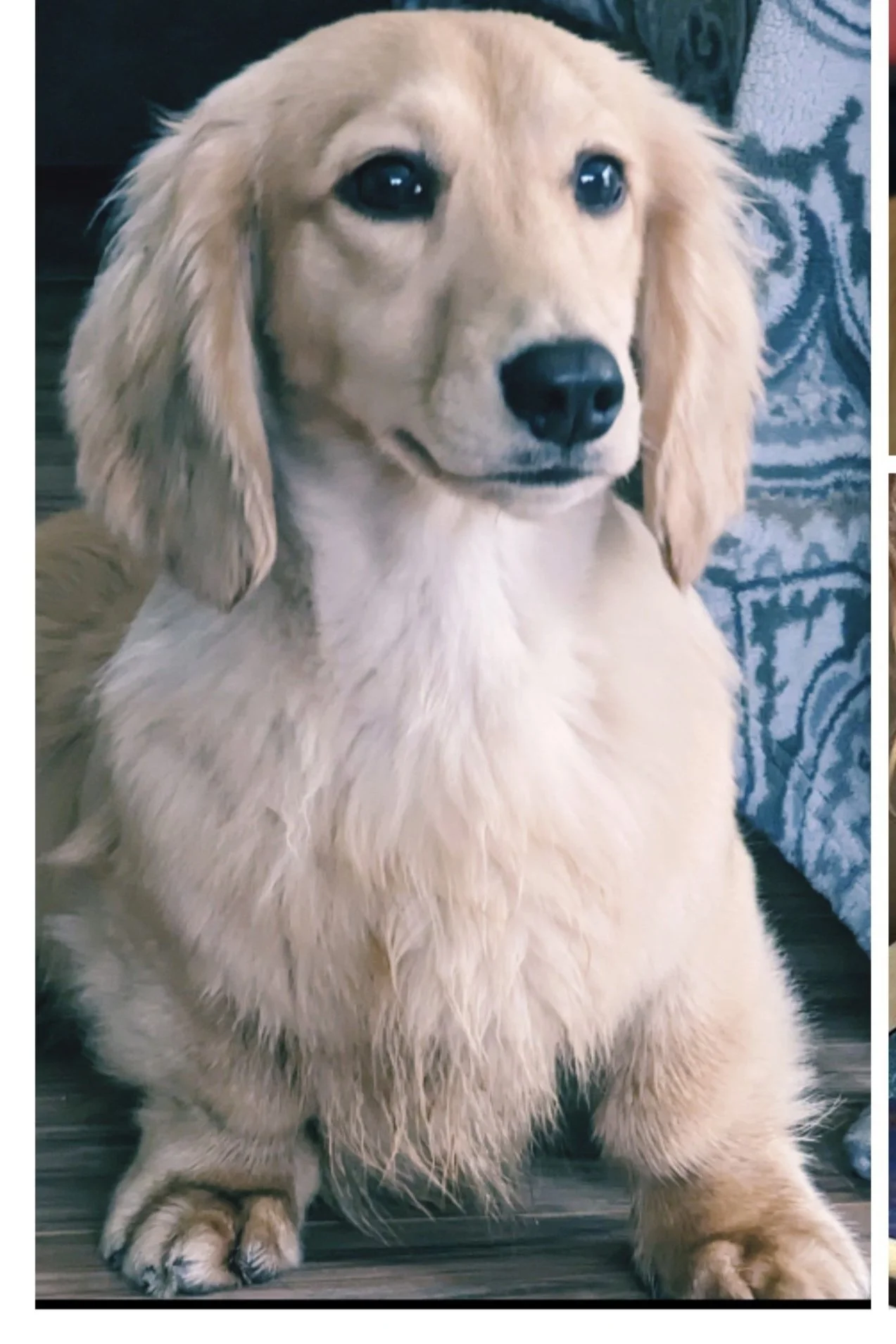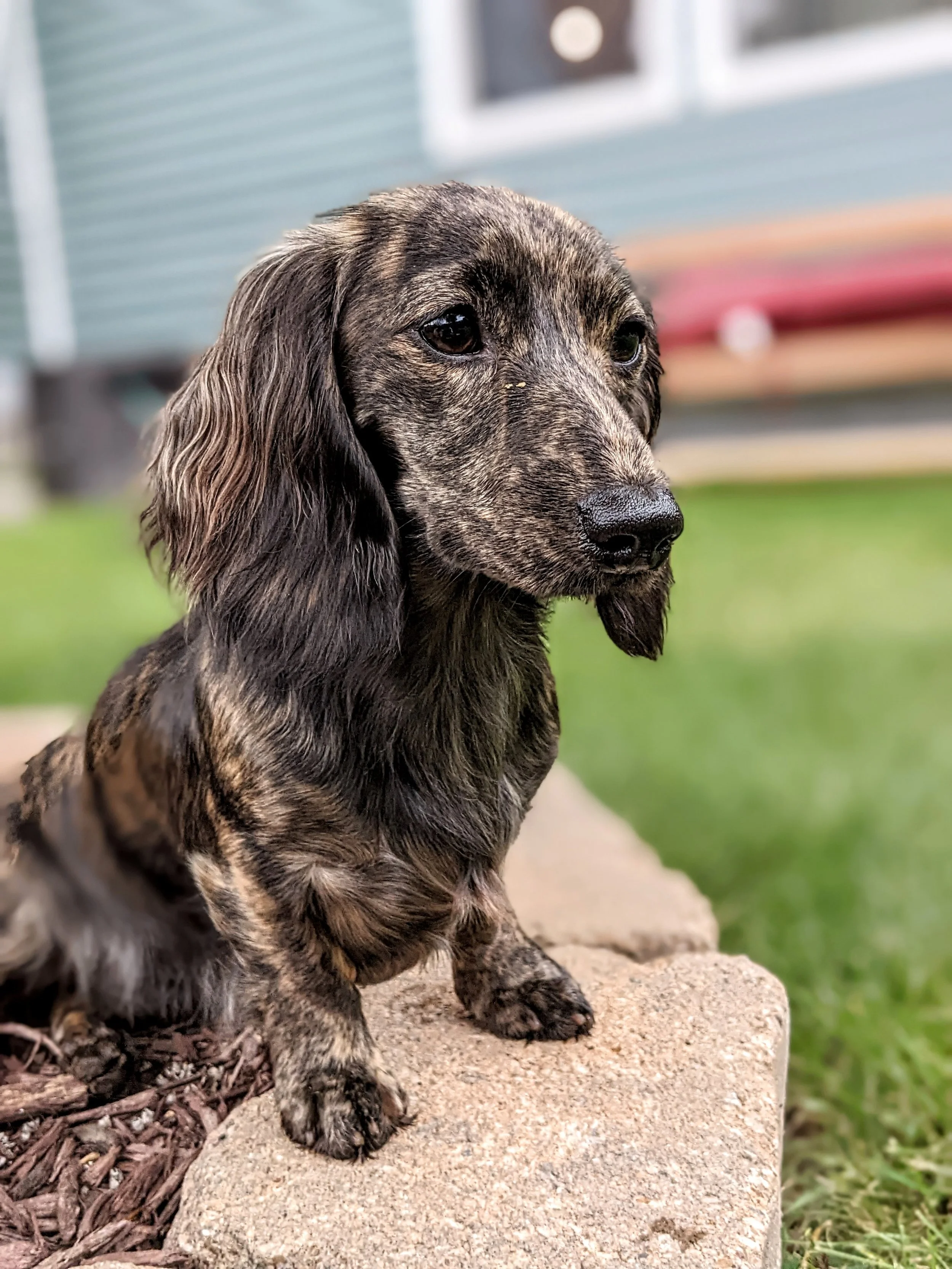Dachshund Color Genetics
Dachshunds are one of the most genetically diverse breeds, in regards to color and coat. In this article we will be discussing cream variations specifically.
These three are shaded cream
Locus- The physical site or location of a specific gene on a chromosome.
Allele- One of two or more alternative forms of a gene that arise by mutation and are found at the same place on a chromosome.
Dominate vs. recessive- It only takes one copy of a dominate gene in order for the color or pattern to express. A recessive gene needs two copies.
I will be discussing each locus and the variations of alleles that make up specific differences in colors.
(I am only discussing cream and not red in this post. Cream is the dilute of red and a recessive gene)
“I” Locus
For a dog to express cream on the “I” Locus, it must have two copies of the lowercase “I” allele. Because cream is a recessive gene, it requires two copies to express. A cream dog will be i/i on their genetic profile, one copy from the sire and one from the dam.
“A” Locus
Shaded dogs are “ay/ay” or “ay/at” on the A Locus. Because “ay” is dominate, it only requires one '“ay” allele for a dog to be shaded cream.
Sable is also a dominate gene “aw/ay” or “aw/at” and the dog will generally express a sable pattern, which was introduced from wire hairs and smooth dachshunds. The term for this coat type is “wild boar”. There are still unknowns about the sable pattern and what genes need to be present for it to express. More research is needed in this area.
Pointed dogs are called “black and cream or chocolate and cream”. Points are also recessive, which requires two copies to produce a pointed dog. This would be “at/at” on a genetic profile.
“E” Locus
This Locus is responsible for Shading or the lack thereof. If a dog is “E/E” or “E/e” on this Locus, there will be black hairs visible at birth. A dog that is “e/e” on this locus will be born with no black hairs at all and is called a “clear cream”. Two lowercase “e” alleles are required to produce clear cream. If a dog is “ee”, all other patterns except piebald will be hidden. These dogs do not tend to retain pigment as readily as their heavily shaded counterparts. Clear creams can sometimes end up with “snow nose” or a pink-looking nose over time. Again, shaded cream is just a color… English cream is based on pedigree.
“K” Locus
The K locus is in charge of the brindle pattern and is a dominate gene. A dog that is “Kb/Ky” or “Kb/Kb” will be genetically brindle. There are still some unknowns in regards to what makes a darker pattern vs a lighter pattern. Brindle can be hidden on a dog that is “ee”, as the clear gene hides patterns. This gene is also responsible for solid black or chocolate.
“B” Locus
This locus dictates either black or Chocolate-based color. “B” (black) is dominate and only requires one allele to express. “B/B” or “B/b” will produce a black-based dog. A dog with two “b” alleles will be chocolate-based. Chocolate is recessive; only dogs that are “b/b” will express chocolate.
“D” Locus
“D” locus is in charge of dilute genes, isabella and blue. This dilute gene can cause something called “Color Dilute Alopecia” Or “CDA”. Dachshunds are particularly susceptible and it’s very important to know a dogs genetic history, to avoid this terrible disorder. Capital “D” or non-dilute is dominate. So a dog needs two “d” alleles to express dilute. A dog that is “D/d” or “D/D” will not express dilute.
“M” Locus
Dapple “M” (merel) is represented on the ”M” locus. It is imperative that all breeding dogs are tested for this gene. The “M” (merel) allele can cause significant deformities if it is doubled. A dog should only have one copy of this gene. So either “m/m” or “M/m”.
*** This is only a sampling of color genetics and not all the Locus that are tested on a color panel***
Duncan- E/E, at/ay, B/B, DD, i/i, m/m, ky/ky
Finn- E/e, at/ay, B/b, D/D, i/i, M/m, ky/ky
Luna- E/e, at/ay, B/b, D/D, i/i, kb/ky, m/m
BB- E/e, at/at, B/b, D/D, i/i, M/m, ky/ky
Lilly- E/e, at/at, B/b, i/i, D/D, m/m, ky/ky
Peach- E/e, at/ay, B/B, i/i, D/D, m/m, kb/ky






